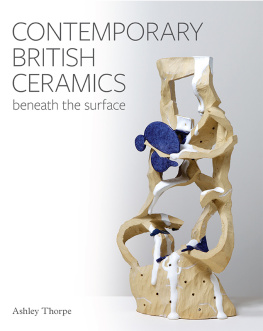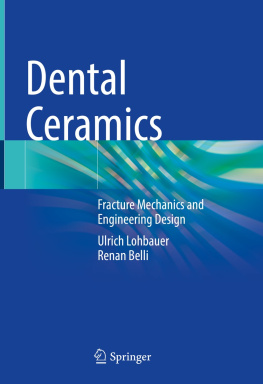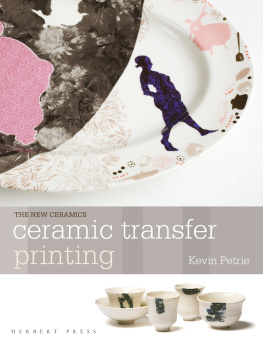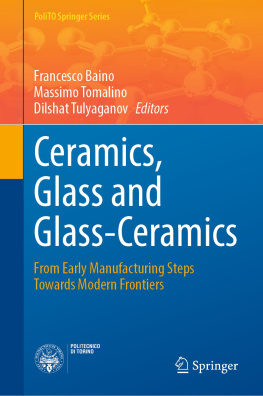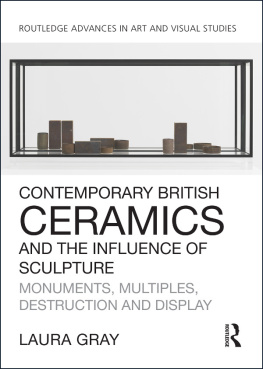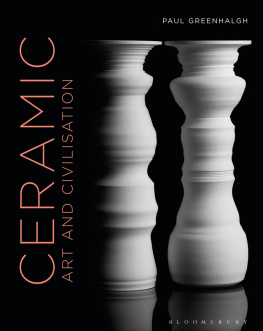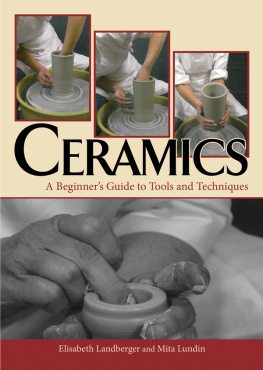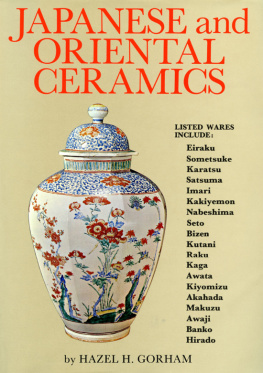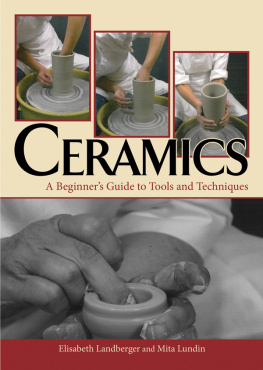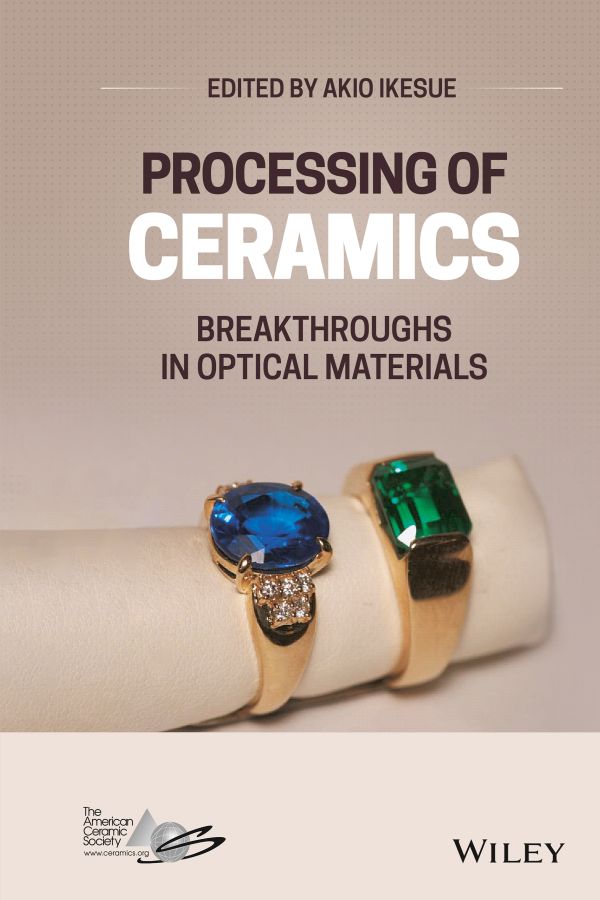
Table of Contents
List of Tables
- Chapter 3
- Chapter 4
- Chapter 5
- Chapter 6
- Chapter 7
List of Illustrations
- Chapter 1
- Chapter 2
- Chapter 3
- Chapter 4
- Chapter 5
- Chapter 6
- Chapter 7
Guide
Pages
Processing of Ceramics
Breakthroughs in Optical Materials
Edited by
Akio Ikesue
World Lab. Co., Ltd., Nagoya, Japan

Copyright 2021 by The American Ceramic Society. All rights reserved.
Published by John Wiley & Sons, Inc., Hoboken, New Jersey.
Published simultaneously in Canada.
No part of this publication may be reproduced, stored in a retrieval system, or transmitted in any form or by any means, electronic, mechanical, photocopying, recording, scanning, or otherwise, except as permitted under Section 107 or 108 of the 1976 United States Copyright Act, without either the prior written permission of the Publisher, or authorization through payment of the appropriate percopy fee to the Copyright Clearance Center, Inc., 222 Rosewood Drive, Danvers, MA 01923, (978) 7508400, fax (978) 7504470, or on the web at www.copyright.com. Requests to the Publisher for permission should be addressed to the Permissions Department, John Wiley & Sons, Inc., 111 River Street, Hoboken, NJ 07030, (201) 7486011, fax (201) 7486008, or online at http://www.wiley.com/go/permissions.
Limit of Liability/Disclaimer of Warranty: While the publisher and author have used their best efforts in preparing this book, they make no representations or warranties with respect to the accuracy or completeness of the contents of this book and specifically disclaim any implied warranties of merchantability or fitness for a particular purpose. No warranty may be created or extended by sales representatives or written sales materials. The advice and strategies contained herein may not be suitable for your situation. You should consult with a professional where appropriate. Neither the publisher nor author shall be liable for any loss of profit or any other commercial damages, including but not limited to special, incidental, consequential, or other damages.
For general information on our other products and services or for technical support, please contact our Customer Care Department within the United States at (800) 7622974, outside the United States at (317) 5723993 or fax (317) 5724002.
Wiley also publishes its books in a variety of electronic formats. Some content that appears in print may not be available in electronic formats. For more information about Wiley products, visit our web site at www.wiley.com.
Library of Congress CataloginginPublication Data Applied for:
ISBN: 9781119538707
Cover Design: Wiley
Cover Image: Akio Ikesue
List of Contributors
Yan Lin Aung
WorldLab Co., Ltd. Mutsuno
Atsutaku
Nagoya
Japan
Penghui Chen
Key Laboratory of Transparent Optofunctional Inorganic Materials
Shanghai Institute of Ceramics
Chinese Academy of Sciences
Shanghai
China
and
Center of Materials Science and Optoelectronics Engineering
University of Chinese Academyof Sciences
Beijing
China
Xiaopu Chen
Key Laboratory of Transparent Optofunctional Inorganic Materials
Shanghai Institute of Ceramics
Chinese Academy of Sciences
Shanghai
China
and
Center of Materials Science and Optoelectronics Engineering
University of Chinese Academy of Sciences
Beijing
China
Akio Ikesue
WorldLab Co., Ltd. Mutsuno
Atsutaku
Nagoya
Japan
Jiang Li
Key Laboratory of Transparent Optofunctional Inorganic Materials
Shanghai Institute of Ceramics
Chinese Academy of Sciences
Shanghai
China
and
Center of Materials Science and Optoelectronics Engineering
University of Chinese Academy of Sciences
Beijing
China
Xin Liu
Key Laboratory of Transparent Optofunctional Inorganic Materials
Shanghai Institute of Ceramics
Chinese Academy of Sciences
Shanghai
China
and
Center of Materials Science and Optoelectronics Engineering
University of Chinese Academy of Sciences
Beijing
China
Takuya Mikami
Okamoto Optics, INC.
Haramachi, Isogoku
Yokohama
Japan
Martin Nikl
Institute of Physics of the Czech Academy of Sciences
Prague
Czech Republic
Jian Xu
Graduate School of Human and Environmental Studies
Kyoto University
Kyoto
Japan
and
International Center for Young Scientists (ICYS)
National Institute for Materials Science (NIMS)
Tsukuba
Japan
Preface
I worked for a refractory company specializing in steelmaking and was planning to retire as a refractory engineer after graduating from the university (master's course) in 1983. In 1991, my boss, the research director, said to me, I want you to develop anything good new technology. New technology for refractory companies generally means development of refractories useful for steel smelting. However, as a young and motivated engineer at that time, anything good was interpreted by me as new development in any area of expertise is okay! I was very interested in ceramics at that time, but I was quite an amateur, so if I have to do anything new, I chose a research that is the most challenging in the world and in which no one has succeeded until now. I had read a variety of literature and judged that laser oscillation with polycrystalline ceramics would be the most difficult technology. At that time I focused on the article Polycrystalline Ceramic Lasers, J. Appl. Phys. (1973) by C. Greskovich and J. P. Chernoch, but their results were distinctly different from laser oscillation. Besides, similar research was not reported by other researchers. I suddenly understood that this must be a certainly difficult technology. I also understood that even single crystals cannot oscillate laser with high efficiency in the case of lamp excitation system. I thus interviewed several Japanese laser specialists and scientists regarding the possibility of developing ceramic lasers, but the only answer I received was even glasses and single crystal laser gain media have optical problems; ceramics with lots of scattering sources aimed for laser gain media is absolutely meaningless. The same question was asked to material scientists as well, and their answers were also similar that translucent ceramics has been developed, but its optical quality is low quality that cannot be compared with single crystal. So, you should quit this foolish idea to develop a ceramic laser. Even from the viewpoint of scattering theory, it seemed considerably impracticable, so I presumed that this must be a new technology, and it became the starting point for my new research topic i.e. the development of ceramic lasers.
However, since I was merely a refractory engineer with not much expertise in ceramics or laser, I did not know what the fundamental problems are and how to approach the development of ceramic lasers, except that I had to create the material from scrap. The only thing I could think was first of all I just have to completely eliminate the scattering sources and then the last remaining problem is the existence of the grain boundary, and I believed that my challenge will succeed if there is no optical problem with the grain boundary. The kamikaze challenge began in the summer of 1991, in autumn I succeeded in making a transparent YAG (Y3Al5O12) sintered body, and in December a transparent YAG ceramics doped with laser active element Nd was successfully produced. Although I knew it was still of insufficient optical quality, I requested the research institution and companies for laser oscillation test using the samples, but they all rejected it because of the only reason being that it was a polycrystalline material. Finally, in late December, I brought my ceramic samples to Osaka University, Laser Fusion Research Center, which is the only university in Japan interested in ceramic lasers. Prof. K. Yoshida also tested it with uncertainty, but the next day he was able to oscillate the CW laser using my samples at room temperature. This was the birth of the world's first ceramic laser. However, one year after the first laser oscillation, research and development was interrupted because I worked in a refractory company where research and development of refractories is the main focus. In 1994 I first presented the possibility of laser oscillation by ceramics at a conference in Japan, but most researchers ignored the results. For the purpose of summarizing my research results, I submitted a paper titled Fabrication and Optical Properties of HighPerformance Polycrystalline Nd:YAG Ceramics for SolidState Lasers to the journal of American Ceramic Society in 1995, after which the study was completely stopped. In order to continue the development of ceramic lasers, I retired from the refractory company in 1996, joined a private company, and later joined a research institution; however, ceramic laser was not well recognized in Japan. Eventually, there was no way but to establish my own company in 2005 and continue the research and development of ceramic laser. The research was suspended for 14 years from the birth of ceramic lasers. Meanwhile, research on ceramic lasers, which is more promising than single crystals for their higher performance and high output power, has been active abroad and received a lot of funding. I have attempted to resume ceramic laser development for 14 years, and fortunately, since 2007 I have been able to resume research on ceramic laser with support from AOARD/AFOSR (Asian Office of Aerospace Research and Development/Air Force Office of Scientific Research), which are part of AFRL (Air Force Research Laboratory). Bringing out truly new science and technology on the basis of our understanding of the surroundings is not an easy one, and in my case it took me a lot of endurance and perseverance.
Next page

